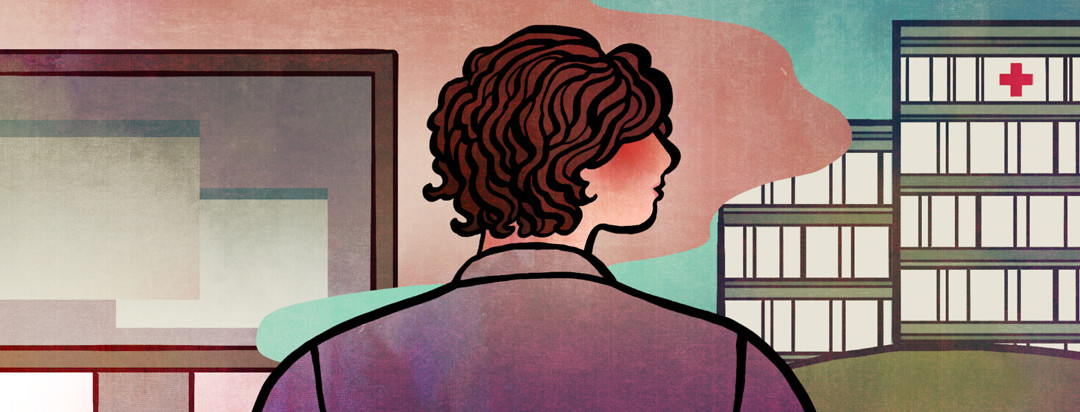How to Handle the Emergency Department for Cluster Headaches
The first time someone has a cluster headache attack, it may send them to the emergency room (ER). It's common and recommended for anyone experiencing a new, severe, sudden-onset headache to seek help in the emergency department. A new headache type could be a warning sign of a life-threatening health concern such as a brain tumor or aneurysm. If you don't have a diagnosis, some protocols need to happen to rule out these issues, including an MRI. If you do have a cluster headache diagnosis, getting the help you need in the ER is challenging at best.
Why are cluster headaches mismanaged?
Cluster headaches come on suddenly, peaking within a few minutes, and last anywhere from 15-180 minutes (sometimes longer). By the time you get to the ER and are seen by a medical professional, the attack will likely have passed. You probably won't be able to get treatment in time. Additionally, ER personnel don't have the training to recognize and treat cluster headaches. You will likely be denied high flow oxygen and given opioids instead. If you're lucky, they may give you a shot of sumatriptan, which is highly effective for acute attacks.
When should you go to the ER?
There are several circumstances where you need to go to the ER to treat a cluster headache attack. You might be away from home and without your medications or oxygen tank. Perhaps, you don't have these treatments at all. Many people rely on primary care physicians to treat their cluster headaches, but it's best to get a referral to someone who specializes in headache disorders. The ER can be helpful in these areas by providing a short-term prescription for an abortive treatment such as sumatriptan injections and a referral to a headache specialist or neurologist near you. (Sumatriptan injections are a Level A treatment for the condition.)1
How can you get the help you need?
Bring someone with you who knows you have cluster headaches and can help speed up the process. It's hard to sit still, let alone talk, during an attack, so having a support person with you will help. Tell Admissions that you have cluster headaches. Explain you are experiencing an acute attack and need treatment ASAP with high-flow oxygen or an abortive medication you know works for you. They may still put you at the back of the line, especially if the emergency department is busy with severe injuries.
How can you speed up the intake process?
You can hasten the intake process if you carry a printed or written piece of paper with your health care information such as:
- Medications
- Allergies
- Supplements
- Diagnoses
- Treating physicians
- Health insurance
- Emergency contact
I wore a medical alert bracelet for several years with my name, episodic cluster headache diagnosis, emergency contact, and "high-flow oxygen needed." That helped me several times in Urgent Care settings, along with my listed information.
What shouldn't you leave the ER without?
You likely won't be seen in time to abort that specific attack. But you can develop a plan for the next one, which could be just hours away. Don't leave the ER without coming up with a course of action for the next attack. That could include a prescription for an abortive medication, a prescription for home oxygen therapy, and a referral to a specialist if you don't already have one. The ER should not be your go-to for cluster headache treatments but is an option when you have nothing to treat the attack or have no idea what is happening to you.
My experience with cluster headache in ER
I found myself in the ER many times during the first year I developed cluster headaches. I was in a new state and didn't have established care or any idea about cluster headaches aside from the sudden, stabbing pain of attacks. During my second cycle, I went to the ER twice in two days. The medical professionals didn't believe that an 18-year-old woman could have cluster headaches, so they treated me for a migraine attack… with opioids. Opiates are not indicated for cluster headaches and did nothing to stop the pain. These attacks happen at the same intervals each day. I was back at the exact time the next morning, explaining the hydrocodone did nothing. They acted like I was a drug seeker and didn't give me any further treatment.
I never went back to that hospital. Instead, I went to Urgent Care, where they gave me oral sumatriptan. Oral medications are not indicated for cluster headaches, but hey, at least they got the type of drug right.
Why are headache disorders mistreated in the ER?
The emergency department can be a nightmare to deal with whether you have cluster headaches or migraine disease. Headache disorders are largely mismanaged in these settings, but sometimes you have no choice. Hopefully, these tips will help you receive timely, adequate care for cluster headaches in the ER.

Join the conversation